I just attended the OFC/NFOEC meeting in Anaheim, where all the issues of the day are high-speed fiber-optic communications. At the show, I watched three different 100G CFP2 optical module demonstrations at three different booths: the Oclaro booth demonstrated the Oclaro LR4 CFP2 module; the Ethernet Alliance booth demonstrated the Finisar 100GBASe-LR4 CFP2 module. The Optical Internet Forum (OIF) booth showcased the 100GbE CFP LR4 transceiver from Fujitsu OpTIcal Components. I saw that all exhibits transmitted 100G data over fiber, and both used the Xilinx Virtex-7 580T 3DIC with an eight-way 28.05G (GTZ) serial transceiver (SerDes) to drive the string.
The following is an interoperability block diagram provided by the Ethernet Alliance, showing two Finisar CFP2 modules (see inside the red circle): 100G-LR4 can transmit 100G data over 10km of single-mode fiber, while 100G-SR10 can pass 150m. Multimode fiber transmits data at 100G.
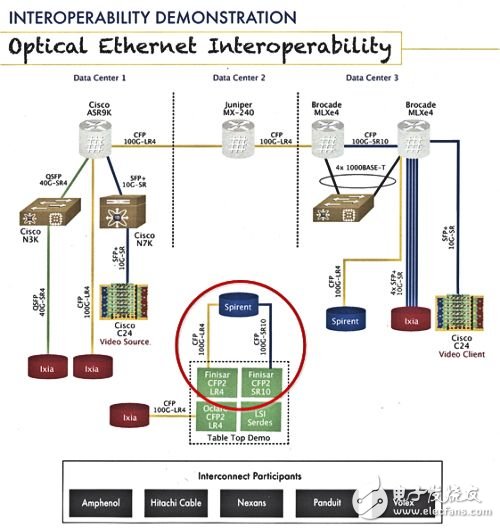
Interoperability demonstration
Optical Ethernet interoperability
The Xilinx Virtex-7 HT 580T drives the Finisar CFP2 100G-LR4 module with a four-way SerDes port at a rate of 25.78 Gbps per channel. (The Virtex-7 580T has an eight-way 28.05G serial transceiver.) Finisar is currently sampling these 100GCFP2 modules.
I took this picture on the side of the corridor at the Oclarco booth, showing the 100G Oclaro LR4 CFP2 optical module being driven by another Xilinx Virtex-7 HT 580T 3D IC.
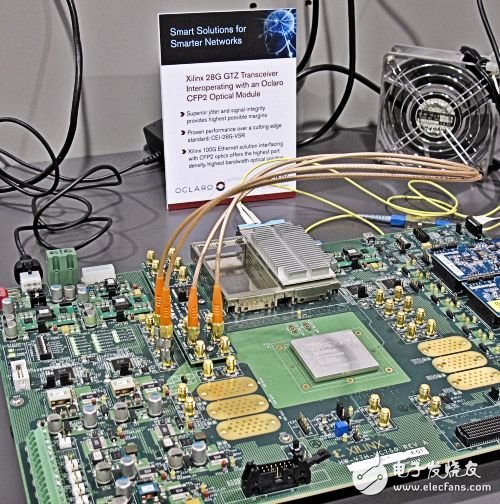
I couldn't help but take a photo of this artistic Virtex-7 580T 3D IC:
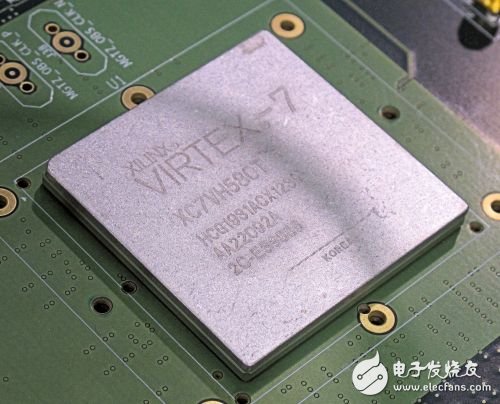
Finally, I stopped at the OIF booth at the end of the corridor to showcase the 100GCFP2 LR4 module from Fujitsu Optical Devices Co., Ltd., which is working. The picture below shows the layout of the OIF booth:
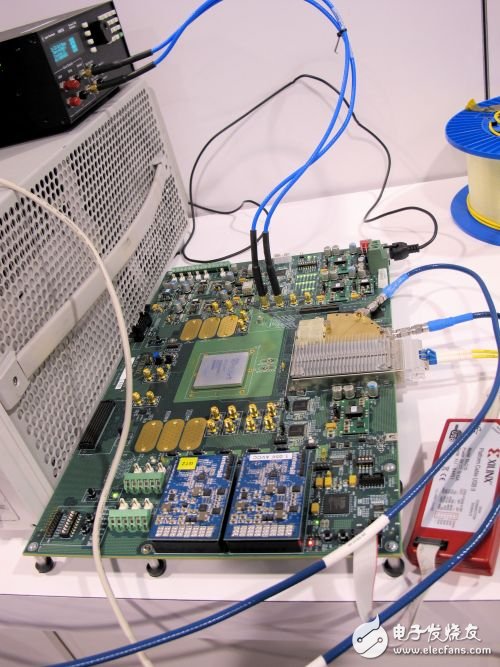
In the upper right corner of the photo, you can see a fiber optic drive driven by the device.
The Xilinx Virtex-7 580T 3D IC evaluation board has been modified to accommodate one of the four Virtex-7 580T GTZ serial ports that drive the Fujitsu CPF2 module at 25Gbps per channel. Here is a close-up of the electrical adapter that can be directly connected to the GTZ serial port signal:
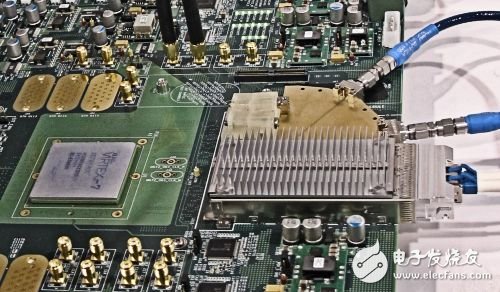
The high-speed electrical connector can be connected to the Agilent 86100D DCA-X high-bandwidth oscilloscope for direct viewing of the transmission eye diagram. The following is a large open transmission eye diagram acquired on this GTZ port:
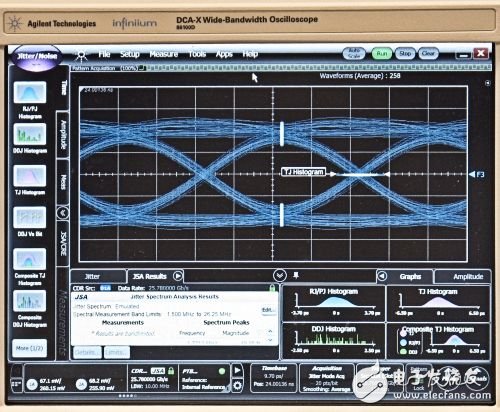
This is the eye pattern that everyone expects, with a focus on port operating rates above 25Gpbs. I am not sure if everyone can read from the accuracy on the graph, but the oscilloscope screenshot shows that the signal is operating at 25.78000 Gbps at this time.
So, what have I learned from the three booths that visited this OFC exhibition? It seems that the development prospects of the CFP2 module will be very strong this year, and there are already products that can work for everyone to visit. In addition, if you want to drive any CFP2 module, the Xilinx Virtex-7 580T 3D IC with GTZ serial transceiver is the ideal choice.
Also note that the Virtex-7 580T 3D IC in the photo does not use a heat sink, which indicates that the power consumption of the GTZ serial port is very low. They really don't consume much power. Now if you want to combine the FPGA architecture of the Virtex-7 580T 3D IC with other high-speed logic, you may want to consider adding a heat sink. This is not to mislead everyone, this is not what I did.
Motion Control Sensor is an original part that converts the change of non-electricity (such as speed, pressure) into electric quantity. According to the converted non-electricity, it can be divided into pressure sensor, speed sensor, temperature sensor, etc. It is a measurement, control instrument and Parts and accessories of equipment.
Absolute Rotary Encoder,Absolute Linear Encoder,Absolute Optical Encoder,Absolute Position Encoder
Changchun Guangxing Sensing Technology Co.LTD , https://www.gx-encoder.com